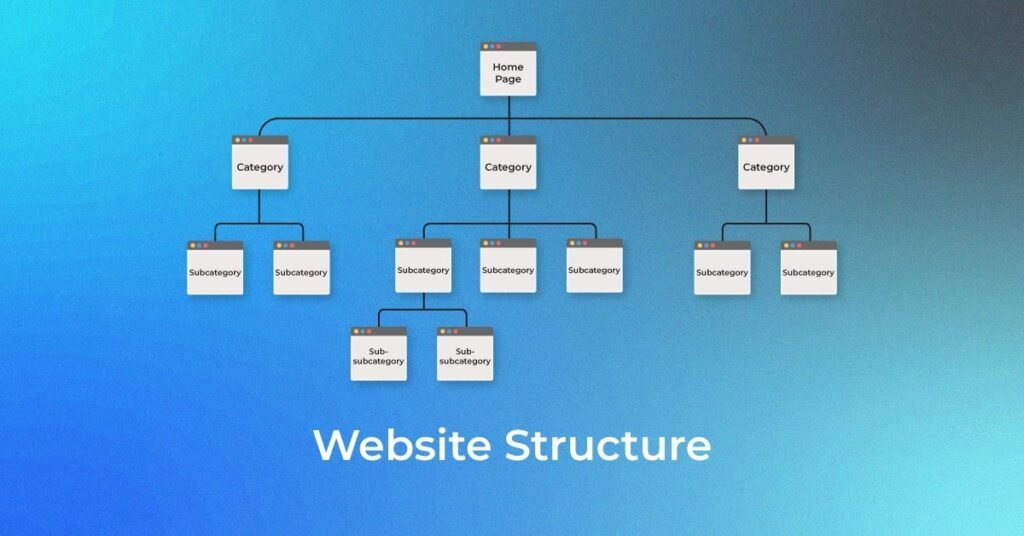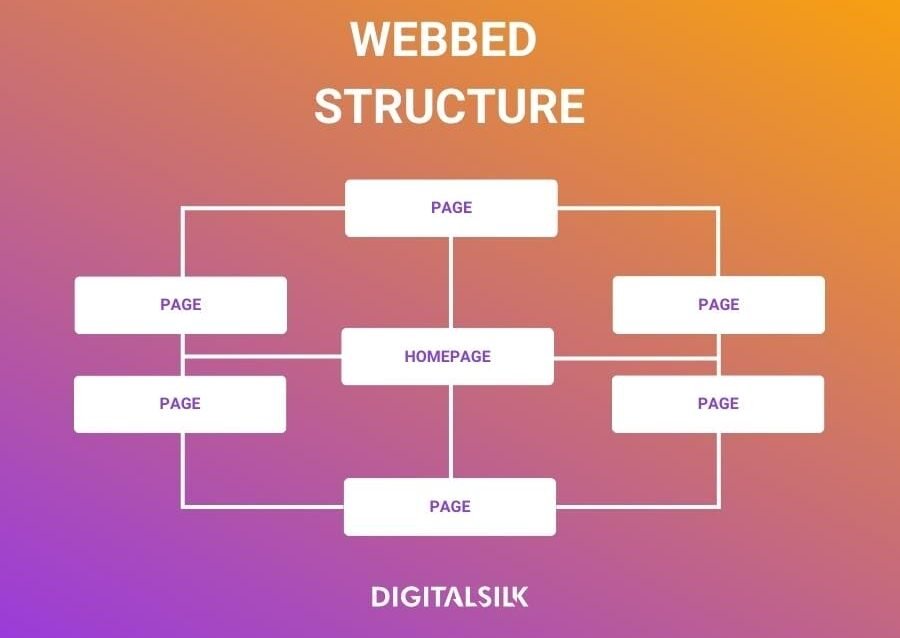
Understanding Website Structure: What Every Business Owner *Needs* to Know for SEO & Growth
Meta Description: Discover why website structure is critical for your business’s online success. Learn how a well-organized site boosts SEO, enhances user experience, and drives conversions. A must-read for every business owner.
Introduction: Beyond the Pretty Design – The Hidden Foundation of Your Online Business
Why Website Structure Isn’t Just for Techies
As a business owner, you likely understand the importance of a visually appealing website. It’s your digital storefront, your 24/7 salesperson, and often the first impression a potential customer has of your brand. But what if we told you that beneath that polished design lies a crucial, often overlooked element that dictates much of your online success? We’re talking about your website structure – the invisible blueprint that defines how your content is organized and interconnected.
This isn’t just technical jargon for developers. A well-thought-out website structure directly impacts your visibility in search engines, the ease with which customers find what they need, and ultimately, your ability to generate leads and sales. Ignoring it is like building a beautiful house on a shaky foundation.
What You’ll Learn in This Guide
In this comprehensive guide, we’ll demystify website structure and explain why every business owner needs to understand it. You’ll gain actionable insights into how optimizing your site’s architecture can:
- Significantly boost your SEO rankings and organic traffic.
- Dramatically enhance user experience (UX) and engagement.
- Drive higher conversion rates, leading to more leads and sales.
- Improve your site’s scalability, making future growth and content expansion effortless.
Ready to unlock your website’s full potential? Let’s dive in!
What Exactly is Website Structure? A Simple Definition for Business Owners
Visualizing Your Website’s Blueprint
Imagine your website not as a flat collection of pages, but as a complex building or a meticulously organized department store. Just as an architect designs a building with different floors and rooms, or a store manager arranges aisles for easy shopping, your website needs a logical, hierarchical plan.
Website structure is simply the way your website’s content and pages are organized, categorized, and linked together. It’s the blueprint that guides both your human visitors and search engine robots through your digital space.
Key Components That Make Up Your Structure
Your website structure is built from several interconnected elements:
- Navigation Menus: These are the primary links at the top of your page (main menu), often secondary menus in sidebars, and comprehensive links in your footer. They are the user’s primary map.
- URL Structure: The way your web addresses are formed (e.g.,
yourdomain.com/category/product-name). Clean, descriptive URLs are vital for both users and search engines. - Internal Linking: How pages link to each other within your site, creating a network of related content. This helps users discover more and passes SEO value between pages.
- Site Architecture: The overall plan and depth of your content, typically visualized as a pyramid, with the homepage at the top and specific pages branching out below.
Why Website Structure is Non-Negotiable for Your Business Success
The Dual Audience: Users and Search Engines
Your website structure serves two equally important audiences:
- Your Users (Potential Customers): They need to find information quickly and effortlessly. A confusing site frustrates them, leading to bounces and lost opportunities.
- Search Engines (Like Google): They need to understand what your website is about, identify its most important content, and efficiently crawl (read) and index (catalog) its pages.
The good news? What’s good for users is almost always good for SEO. A clear, logical structure makes your site more navigable for humans and more comprehensible for algorithms.
Investing in Your Digital Foundation for Long-Term ROI
Think of optimizing your website structure as a foundational investment. Unlike fleeting marketing campaigns, a strong structure provides sustained benefits. It reduces future headaches, prevents costly redesigns, and ensures your digital asset is working as hard as possible for your business, generating returns for years to come.
The Core Benefits of a Well-Structured Website (And How it Impacts Your Bottom Line)
Boost Your SEO Rankings & Organic Visibility
- Easier Crawling & Indexing by Search Engines: Search engine bots (spiders) navigate your site by following links. A clear hierarchy helps them efficiently discover and understand all your important pages, ensuring they get indexed and can rank.
- Better Context & Topic Authority: By grouping related content, you signal to Google your expertise in specific areas. This helps establish your site as an authoritative source, improving rankings for relevant keywords.
- Improved Internal Link Equity Distribution: Internal links pass “link juice” (authority) from stronger pages to weaker but important ones. A good structure ensures this equity flows logically, empowering key conversion pages.
- Opportunity for Rich Snippets & Sitelinks: A clear, hierarchical structure with well-defined content types can help your site qualify for enhanced search results like sitelinks (sub-links under your main listing) and rich snippets, making your listing stand out.
Enhance User Experience (UX) & Engagement
- Intuitive Navigation & Faster Information Retrieval: Users can quickly find products, services, or information without frustration. This builds trust and encourages exploration.
- Reduced Bounce Rates & Increased Time on Site: When visitors easily find what they’re looking for and discover related content, they’re less likely to leave prematurely and more likely to spend time engaging with your brand.
- Positive Brand Perception & Trust: A well-organized, easy-to-use website feels professional, reliable, and thoughtful, reflecting positively on your entire business.
Drive Conversions, Leads & Sales
- Clear Paths to Purchase or Contact: A logical structure guides users effortlessly through your sales funnel, from discovery to decision. Whether it’s adding to cart or filling out a contact form, the path is clear.
- Optimized Funnels for Lead Generation: Ensuring your lead magnets, sign-up forms, and calls-to-action are easily discoverable and accessible throughout the user journey maximizes conversion opportunities.
- Better Customer Journey Mapping: By observing how users move through your structured site, you can gain insights into their behavior, identify bottlenecks, and refine your approach to better serve their needs.
Improve Site Scalability & Maintenance
- Easier Content Management & Future Expansion: A well-defined structure makes it simple to add new products, services, blog posts, or entire sections without disrupting the existing order or causing chaos.
- Reduced Technical Debt Over Time: A messy, unorganized site accumulates “technical debt” – a growing burden of fixes and complexities. A good structure prevents this, making updates and maintenance much more efficient.
Types of Website Structures & Which is Right for Your Business
Hierarchical (Pyramid/Silo) Structure: The Gold Standard for Most Businesses
This is the most common and recommended structure. It organizes content from broad categories to more specific subcategories, like a company’s organizational chart or a pyramid.
- Pros: Excellent for SEO, provides clear navigation paths, highly scalable for growing content.
- Cons: Can become too deep if not carefully managed, requiring many clicks to reach certain pages.
- Examples: E-commerce stores (Home > Apparel > Men’s > Shirts), service-based businesses (Home > Services > SEO > On-Page SEO), large blogs.
Sequential Structure: Guiding Users Through a Process
This structure guides users through a predefined, linear series of steps. Think of it as a guided tour.
- Pros: Highly controlled user journey, ideal for specific processes.
- Cons: Not suitable for general browsing or content discovery; users must follow the path.
- Examples: Checkout processes, multi-step registration forms, online courses.
Matrix/Web Structure: Interconnected Content (Less Common for Standard Business Sites)
In this structure, pages link to many other related pages without a strict hierarchy, allowing users to explore content based on their interests.
- Pros: Great for content exploration and discovery; users can find related information easily.
- Cons: Can be confusing if not meticulously designed; less SEO-friendly for establishing authority on specific topics due to diluted focus.
- Examples: Wikipedia, complex research databases.
Flat Structure: Simple but Can Become Problematic
A flat structure means most pages are only one or two clicks away from the homepage, with very few layers of subcategories.
- Pros: Easy to navigate for very small websites with limited content.
- Cons: Difficult to scale as content grows; can dilute SEO authority for deeper topics if everything is seen as equally important.
- Examples: Small brochure websites with only a few pages (Home, About, Services, Contact).
Choosing the Best Structure for Your Business Goals
For most businesses, a **hierarchical structure** is the most effective. It balances SEO benefits with excellent user experience and scalability. The key is to plan your structure based on your content, products, services, and most importantly, your target audience’s needs and how they will likely search for information.
Best Practices for Building (or Improving) Your Website Structure
Plan Before You Build: Information Architecture Basics
Don’t just start adding pages! A little planning goes a long way.
- User Persona & Journey Mapping: Understand who your customers are and what their goals are when visiting your site. Map out the ideal paths they should take.
- Keyword Research & Content Grouping: Use keyword research (a core component of SEO services) to understand how your audience searches. Group content logically around these topics to form your categories and subcategories.
Create a Logical URL Structure: Clean, Descriptive & Consistent
Your URLs should be human-readable and reflect your site’s hierarchy.Example: Instead of yourdomain.com/p?id=12345, aim for yourdomain.com/services/web-development/wordpress-design. This tells both users and search engines what the page is about.
Design Intuitive Navigation Menus: Clear & Concise
- Limit Main Menu Items: Aim for 5-7 clear, concise labels in your primary navigation. Too many options overwhelm users.
- Use Clear, Descriptive Labels: Avoid jargon. “About Us,” “Services,” “Products,” “Blog,” “Contact” are universally understood.
- Utilize Footer Navigation for Secondary Links: Use the footer for less critical but still important links like “Privacy Policy,” “Terms of Service,” or “Careers.”
Implement Strategic Internal Linking: Connect Relevant Content
This is powerful for both SEO and UX.
- Link to Related Content: When discussing a service, link to relevant case studies (see some Neutrons projects here) or blog posts.
- Use Descriptive Anchor Text: Instead of “click here,” use phrases like “learn more about our digital marketing strategies.”
Utilize Breadcrumbs: A User & SEO Friend
Breadcrumbs are the navigational aid that shows users their current location within your site’s hierarchy (e.g., Home > Services > SEO). They improve usability and help search engines understand your site structure better.
Optimize for Mobile First: Responsive Structure is Key
A significant portion of your audience will access your site on mobile devices. Ensure your navigation and hierarchy are just as clear, easy to use, and performant on small screens as they are on desktops.
Common Website Structure Mistakes to Avoid (Warning Signs for Business Owners)
- Orphan Pages & Dead Ends: Pages that aren’t linked from anywhere else on your site are almost impossible for users or search engines to find.
- Overly Deep or Shallow Hierarchies: Content buried too many clicks deep (e.g., 7+ clicks from homepage) might never be found. Conversely, a flat structure with everything at the top can be overwhelming and dilute SEO focus.
- Inconsistent Navigation: Menus that change unexpectedly or disappear on different parts of the site confuse users and create a poor experience.
- Keyword Stuffing in URLs or Menus: While keywords are important, cramming them unnaturally into your URLs or navigation labels harms user experience and can lead to search engine penalties. Focus on clarity first.
- Ignoring Mobile Usability: Designing your site structure only for desktop can alienate a large segment of your potential audience, leading to high bounce rates on mobile.
Measuring & Maintaining Your Website Structure: Ongoing Optimization
Tools for Analysis: Google Search Console & Site Audits
- Google Search Console: This free tool from Google is invaluable. It helps you identify indexing issues, crawl errors, and pages that search engines are having trouble accessing. Regular checks are a must. Learn more about Google Search Console.
- The Value of SEO Audit Tools: Tools like Semrush, Ahrefs, or Screaming Frog can crawl your site like a search engine bot and highlight structural issues, broken links, and other SEO problems.
Monitoring User Behavior: Google Analytics
Google Analytics (another free tool) provides insights into how users interact with your site. Track metrics like bounce rates, exit pages, and user flow to identify areas where your structure might be causing frustration or guiding users away from conversion paths. Access Google Analytics.
Regular Reviews & Updates: Your Website Structure Isn’t Set in Stone
Your business evolves, and so should your website. As you add new products, services, or content, regularly review and adjust your site’s structure. This proactive approach ensures your website remains an efficient, powerful tool for growth.
Conclusion: Your Website’s Foundation for Future Growth
Key Takeaways for Business Owners
Understanding website structure isn’t just a technical detail; it’s a fundamental pillar of your online business success. A thoughtfully planned and executed structure is non-negotiable for achieving high SEO rankings, providing an exceptional user experience, and ultimately driving the conversions that fuel your growth.
By investing time and effort into your website’s foundation, you’re building a digital asset that will consistently deliver value, scale with your business, and stand strong against the ever-changing tides of the online world.
Ready to Build a Stronger Online Presence? (Call to Action)
Does your current website structure need an overhaul? Are you just starting out and want to get it right from day one? Don’t leave your online success to chance.
Our team at Neutrons Agency specializes in crafting robust, SEO-friendly website structures and developing digital strategies that drive real business results. We can help you:
- Conduct a comprehensive site audit to identify structural weaknesses.
- Plan and implement an optimized information architecture.
- Design intuitive navigation that delights users and search engines.
- Build a scalable foundation for your future digital growth.
Contact Neutrons Agency today for a consultation and let’s build your pathway to online success! You can also explore our About Us page to learn more about our expertise and commitment to our clients.




